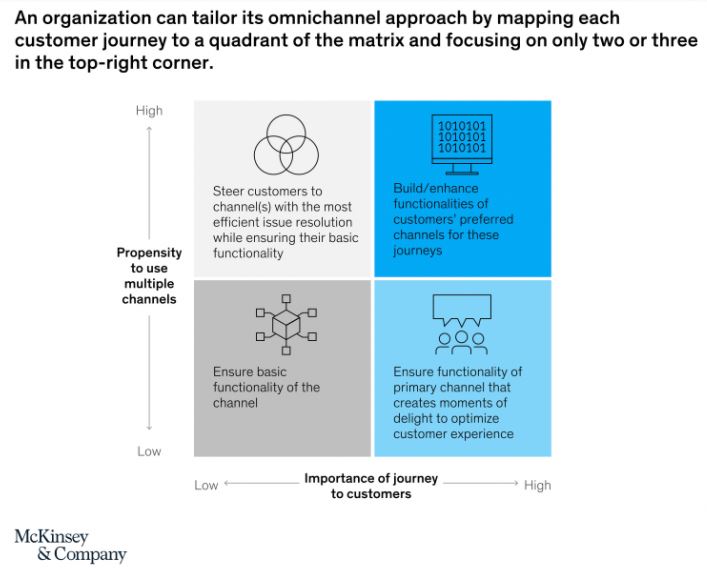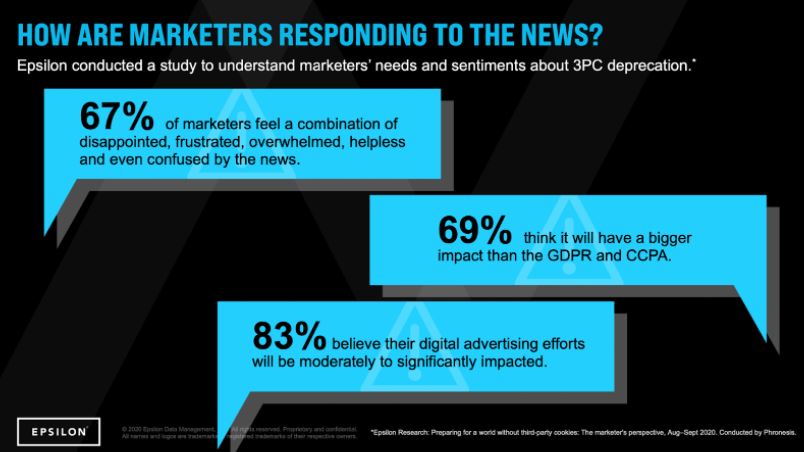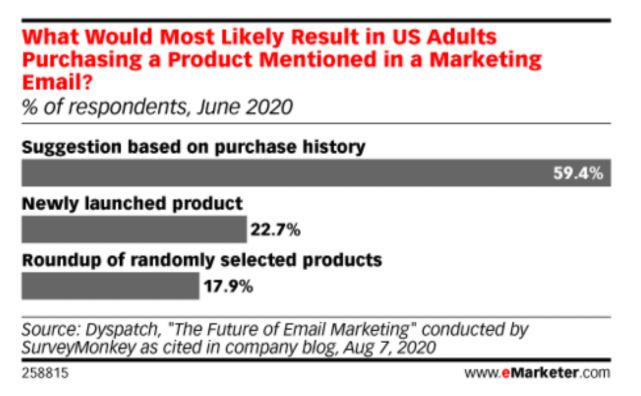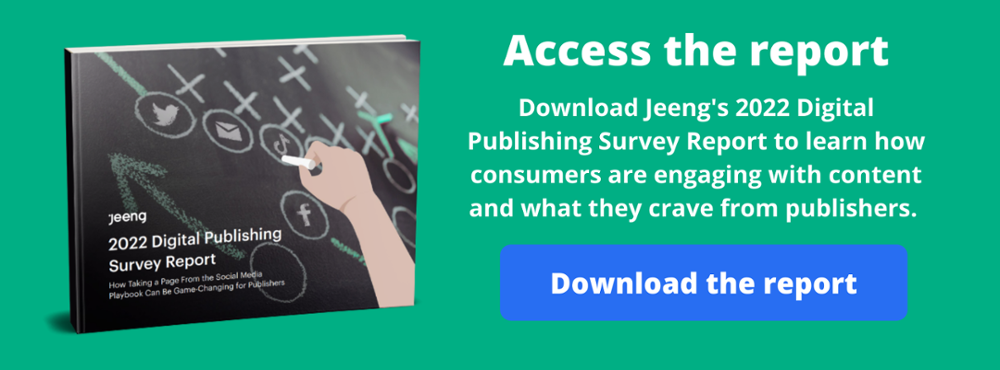Not to get all metaphysical on you, but if time is relative — and, according to Einstein, it is — that means the concept of the future is relative, too.
So, as it relates to the marketing world today, it’s fair for us to assert that the future is actually happening, well…NOW.
That’s all just a flashy way of saying, “don’t wait for the so-called ‘future of personalization’ or ‘future of marketing.’ The advanced tools and tactics we’ve been predicting for years are actually here. And you can start using them to shape your customer experiences and deliver relevant content to your audiences today.“
In fact, we did the research to prove it. We dug up some marketing personalization predictions from years ago to see if they came true and find out if we are, in fact, living in the future.
So, buckle into your time machine and get ready for some takeaways!
Here’s what we found.
Marketing leaders will invest in multichannel technologies
In 2018, Gartner reported:
“As marketing matures, leaders will stop delineating by channel and start investing more in multichannel, multidisciplinary technologies that promise enhanced, real-time decision making based on real-time data, machine learning and artificial intelligence (AI) […] AI will be used to deliver data-driven marketing insights and automate channel selection, campaign orchestration, optimization and measurement.”
Well, ain’t that the truth! In fact, Jeeng has been preaching the value of multichannel outreach all along. That’s why we equip marketers to build personalized experiences — beyond just the walled gardens of social and search — on high-impact channels like email, push notifications, websites, and newsreader apps. This way, they can better match the customer journey, which spans across multiple channels, as McKinsey & Company reported.


And speaking of McKinsey & Company, the research company made another notable prediction a few years ago: that top brands would lose their equity to declining loyalty by 2020. Now, who had a crystal ball there? Because loyalty did plummet in 2020, but not for the reason many would’ve expected: the global pandemic.
Due to COVID-19, a shocking 75% of US consumers tried new shopping behaviors and 36% tried new brands in search of convenience and accessibility. And among those who tried new brands, 73% say they’ll continue using those new brands. These shifts bring personalization to the forefront even more. Because if brands can tailor their marketing to match customer preferences, they can be better positioned to win back their audiences, acquire new leads, and drive growth.
First-party data will become a lifeline for marketers and publishers
NewsCred CEO Shafqat Islam made this interesting forecast in 2017:
“Marketers will no longer blindly trust third-party data. With demands to prove ROI at an all time high, marketers require insight into the performance of their strategies in order to improve campaigns based on real insights […] No longer will they blindly accept data from publishers or social networks; they’ll demand direct access to the results through independent data providers on everything from branded content to social campaigns.”
Just about three years later in January 2020, Google announced that it would be taking steps to improve customer data privacy by disabling third-party cookies on its Chrome browsers — shepherding in the so-called cookiepocalypse. While Google proceeded to push off its big move to 2023, the search giant had already sent marketers into a tailspin, forcing them to find alternatives to third-party data tracking and targeting.
As Epsilon reported in 2020, 69% of marketers think third-party cookie depreciation will have a bigger impact than other industry shake-ups like GDPR and CCPA. Yet 80% aren’t yet confident that their vendors can provide viable solutions to this issue.

That’s where first-party data comes in — information that marketers can collect directly from their customers on owned and operated channels.
With first-party data like email addresses at their fingertips, brands can more effectively understand customer behaviors, create unique audience segments, and launch personalized campaigns across channels. They also won’t have to worry about surrendering data to the Facebook-Google duopoly or buying faulty data packages from third-party providers. They’ll have everything they need to gauge and meet customer expectations at their disposal.

Email marketing will become more sophisticated and personalized
In 2016, Nate Kristy, vice president of marketing at Automational offered these insights for the future of personalization:
“We’ll begin seeing more sophisticated and personalized email campaigns […] As analytics become easier to understand and automations become easier to implement, we can expect more email nurturing series triggered by behaviors outside of simple form submissions. Businesses of all sizes will start to base communications on audiences’ interactions with website content — like blogs and product pages — social interactions, customer service inquiries and more.”
Eight years later, email is thriving as an innovative, go-to platform for personalized marketing operations that nurture customers throughout the buyer journey. In fact, the cries of “email is not dead!” seem to be louder and more ubiquitous than ever, especially since it’s the answer to cookiepocalypse, as mentioned above.
As Jeeng CEO Jeff Kupietzy put it:
“With just a single sign up, you can have a known subscriber for life […] and when you send them a newsletter, you can track their interests and behaviors based on how they engage with your content. They become your audience, and you get to cultivate that relationship. It’s a powerful engagement tool that puts you in control.”
According to eMarketer, almost 60% of consumers would be most likely to make a purchase if they received emails with personalized product suggestions based on their buying history.

What’s more, with evolving technologies like artificial intelligence and machine learning, this kind of personalized email marketing is easier to execute than ever. Thanks to AI-based algorithms and automations, marketers can gather behavioral data in real time and trigger customized campaigns that generate engagement and revenue.

Have you caught up with the future of personalization?
Well, you get it — the future of personalization is here! It’s moving fast and it’s full of multichannel marketing, email personalization, and first-party data strategies. The question is: are you on board or are you letting the future pass you by?
It’s time to start taking these trends seriously and incorporating them into your marketing operation. Because they’ll only continue to grow in importance, offering even more advanced tools and tactics for brands and publishers. And those that embrace the future today will be better prepared for the future tomorrow.
Download Jeeng’s 2022 annual consumer report survey to learn more about content personalization trends and more.


